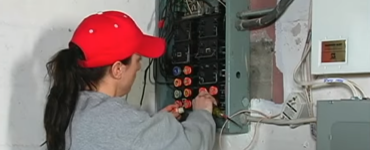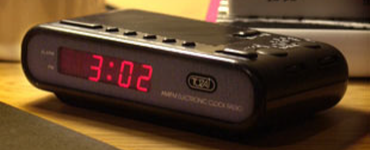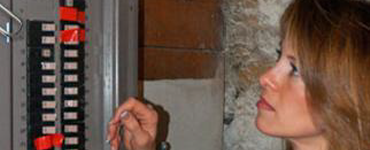Surge protectors
When you're in the store looking for a good surge protector, remember that you get what you pay for. Many multi-outlet "power strips" provide no protection against power surges. A high-quality surge protectors will monitor the flow of electricity and divert excess voltage either back into the system or to the ground.There are two types of surge protectors - to fully protect your electronics, using both types is a must.
Point-of-use surge protectors
A "point-of-use" surge protector guards individual devices from lower-level internal fluctuations.
You may have equipment plugged into a multi-socket power strip, but it's important to realize that many of these devices function simply as extension cords, providing little or no protection against power surges.
The adage "you get what you pay for" very much applies to surge protectors, with prices ranging from $5 to more than $150.
Here's what to look for:
- Enough connections to protect all components of a system.
- An on/off switch allowing you to shut off power to every component.
- UL-1449 rating to ensure adequate testing by Underwriters Laboratories. Look for a specific UL rating, not just a label that says "UL Listed."
- An indicator light or audible alarm so you know a high-level surge has occurred.
- A clamping voltage of 330. This is the level at which the device begins to block the surge - the lower the clamping voltage, the better.
- The total energy dissipation - the higher the better.
- A joule rating of at least 400 is good; 600 is better. This is a measure of the ability to absorb surges.
- A response time of 10 nanoseconds or less.
- Protection between all three wire combinations: L-G, N-G, L-N.
- A warranty against damage to any connected equipment. Keep in mind that no surge protector will be fully warranted against lightning strikes.
- Filters for line noise, also known as electromagnetic interference.
Whole-house surge protectors
To protect against large external power surges, a whole-house protector is key. These devices cost around $150 to $300, and are installed on your service panel by a licensed electrician.
Every component must be connected
While most large appliances can withstand low-level power surges, all programmable appliances should be connected to a surge protector, including:
- Televisions
- DVD and Blu-Ray players
- Video game systems
- Audio equipment
- All computer and home office equipment
- Cable and satellite TV boxes
- Cordless telephones, caller-ID devices and answering machines
- Home security systems
- Microwave ovens
If you have a computer or entertainment system, every component must be connected through a surge protector - one unprotected device can transmit a surge to every other piece of equipment.
For example, if you connect every piece of computer equipment through a protector except the modem line, surge can travel through the modem and spread to the other devices.
One-time only protection against large surges
Also keep in mind that both whole-house and strip protectors offer one-time only protection against large power surges - and no product can protect 100 percent against a catastrophic surge like a lightning strike.
Check the indicator lights on your surge protectors often, especially after storms. If a high-level surge has occurred, you'll need to replace the protectors - but your equipment will be safe.
More from this category
Power surges - cause & effect
Updating electrical wiring
Yesterday's wiring seldom meets today's electrical needs. Learn what it takes to install modern wiring in an older home.





